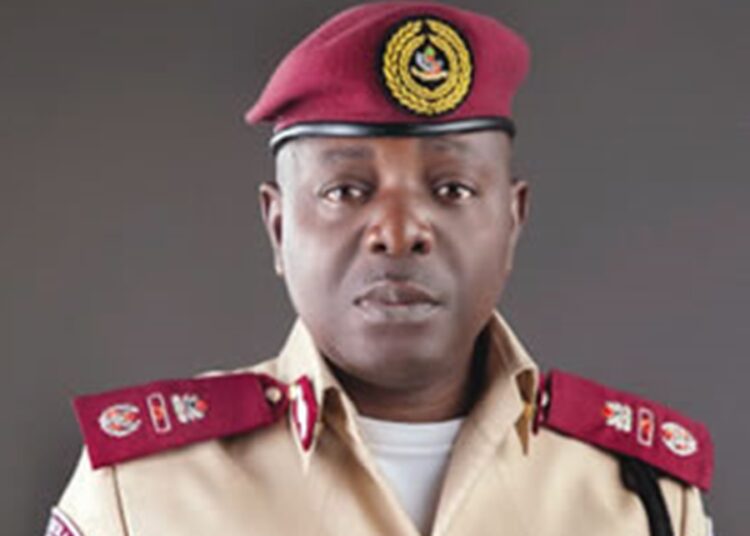I know speed thrills. But it also kills. The World Health Organisation (WHO) identifies excessive and inappropriate speed as the real deal. In the first week of January 2025, I told you so, in a piece captioned: “Check Your Speed In 2025”. It was my curtain raiser. Speed is at the core of the traffic injury problem.
Speed, according to WHO, influences both crash risk and crash consequences. The physical payout of the road and its surrounding can both encourage and discourage speed. However, crash risk increases as speed increases, especially at road junctions and while overtaking.
A good number of road users are guilty of this even though we would rather blame the other driver for our errors. For the speed freaks, please note these truths: that the higher the speed of a vehicle, the shorter the time a driver has to stop and avoid a crash. A car travelling at 50km/h will typically require 1.3 metres in which to stop, while a car travelling at 40km/h will stop in less than 8.5 metres. An average increased speed of 1km/h is associated with a three percent higher risk of a crash involving an injury.
Travelling at 5km/h above a road speed limit of 65km/h results in an increase in the relative risk of being involved in a casualty crash that is comparable with having a blood alcohol concentration of 0.05g/dl. For car occupants in a crash with an impact speed of 80km/h, the likelihood of death is 20 times what it would have been at an impact speed of 30km/h.
It is because of the grave risk involved that countries the world over including Nigeria set and post speed limit, because controlling vehicle speed can prevent crashes from occurring and reduce the impact with which they occur, thus lessening the severity of injuries sustained by the victim.
In Nigeria, the maximum speed on the express is 100km/h for private cars and 90km/h for taxis and buses while at built-up areas such as commercial and residential areas, the initial speed of 50km/h had now been reduced to 30km/h.
I do hope to searchlight overloading which despite efforts by the Federal Road Safety Corps (FRSC) is not abating. A handful of critical crashes are caused by overloading of trailers with passengers, goods and animals. I have already dealt with speed violations but I need to remind you that night trips will receive my attention too.
Night trips have surged again as travellers seek for cheaper travel patterns. I know that I have written several times on this death wish yet the apostles of night travel keep canvassing reasons why they can never give up their free choice which cannot be restricted by law.
This is because globally, there is no legislation anywhere that prohibits night travel. However, the FRSC has mounted a consistent campaign against it. While the Corps appreciates the right of individuals in a democracy, the Corps in keeping with the peculiar Nigerian situation took its stand for several reasons.
This has culminated in a series of workshops held with stakeholders to raise awareness on the dangers involved.
Although a few accidents occur at night like I have highlighted in this column, available data shows that heavier fatalities and casualty rates usually occur. But why is FRSC concerned about night journeys? We are concerned for several reasons ranging from the fact that rescue operations are minimal and most often non-existent in the night. Despite boasting of over 150 ambulances nationwide, ambulances still need to be improved upon.
Consequently, because access to emergency services is poor, death before arrival at the hospital is usually high. In many cases, there is no availability of ambulances, and road crash victims rely on passersby for help. Lack of any medical interventions and long difficult journeys to hospitals reduce the chances of survival
Visibility is another problem. Globally, it is recommended that improving the visibility of road users is one of the specific interventions that can yield positive results. Seeing and being seen are fundamental prerequisites for the safety of all road users and there are several ways of enhancing visibility.
The use of extra reflectors on the vehicle or light reflective vests of the thin plastic material is also recommended by the United Nations (UN) and is contained in the National Road Traffic Regulation, 2004. Illuminating crosswalks, including the flood lighting of pedestrian crossing and increased illumination at crosswalks are also recommended strategies.
For your information, there are reports that some of our road signs, and marking in terms of their shapes, colour and reflectivity do not meet international standards. The consequences is that driving is made more difficult and hazardous because of the absence of the appropriate road furniture to guide motorists at night and bad or poor weather.
The result is the recourse by fleet operators to violate the provision of the traffic regulation by fixing extra lights, which has led to avoidable crashes and death. This is why Federal Roads Maintenance Agency (FERMA) opined that if maximum reflectivity is maintained in our pavement markings, signs and delineators, there would be an increase in night time and poor weather safety on our roads and ultimately a fewer crashes, injuries and fatalities may be recorded.
Retro-reflectivity is a critical element that has helped the United States (US) Department of Transport to achieve its safety goals of reducing fatality by 20 percent. Inadequate visibility because of environmental factors, which makes it hard to detect vehicles and other road users and poor eye sight of road users, are all listed as factors influencing crash involvement.
All these are prevalent among night time operators.
Another factor is the excessive speed at which night buses drive. The National Road Traffic Regulation, 2012 is explicit in the speed limit of 90km/hr for buses and taxis on expressways. How many of such buses truly drive at 90km/hr, and how many of us really worry about such speeds even when some of these drivers do so under the influence of alcohol and even illegal drugs? Yet we delude ourselves that we can never be victims.
Child safety has always been a sore area for the Corps. The traffic regulations make it mandatory for transporting children, especially children under 12 years in properly restrained rear seats. It warns that air bags can injure or kill young children travelling in front seats.
However, it is ironic that most parents, even the ones who claim to have been born, bred and buttered in the white man’s country, deliberately refuse to restrain children under 12 years on the grounds that it is not being enforced. It is common to see such children lapped, sometimes standing in the front seats during festive seasons and even during school runs. Credit must be given to some disturbed parents who wasted no time in pleading that we hasten all legislative backings to enforce this law.
For me as a parent and a safety officer, the protection of my children is not guided by the provisions or absence of mandatory laws. I am always guided by the scriptural provisions, especially Galatian 5:22-23 where it talks about the fruits of the spirit such as love, peace, forbearance, kindness, goodness, faithfulness, gentleness and self-control, stating that, against such things, there is no law.
What this means to me is that I don’t need a law to mandate me to buy a car restraint for the protection of my child, especially when all religion demands such and common sense too. With the level of impunity displayed by parents during the end of the year, I look forward to improved advocacy in this direction and a strengthening of legislative provisions safeguarding children.
Since Agenda setting is not only a media responsibility but also that of the government, I would really love to see the lawmakers not only strengthening all regulations in this direction but to become role models through ensuring that every lawmaker supported by top government functionaries openly display their love for the Nigerian child by purchasing car seats for their children in an open event that could hold at the Eagle Square and across the various states simultaneously. It will be one sure way to honour the children we have lost through avoidable road traffic crashes.





